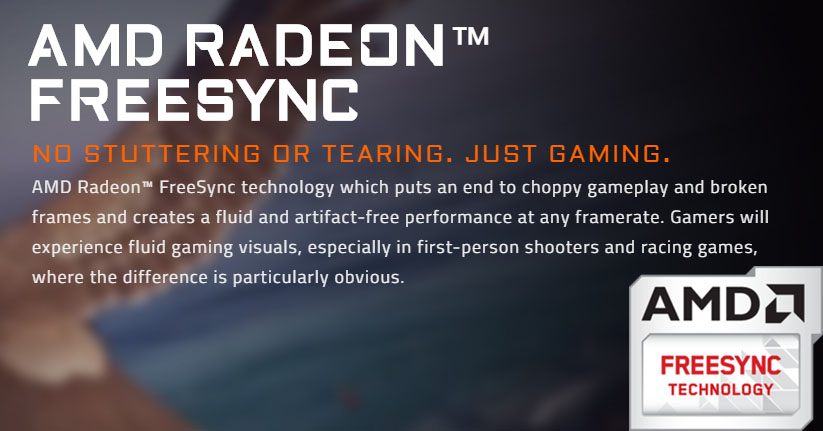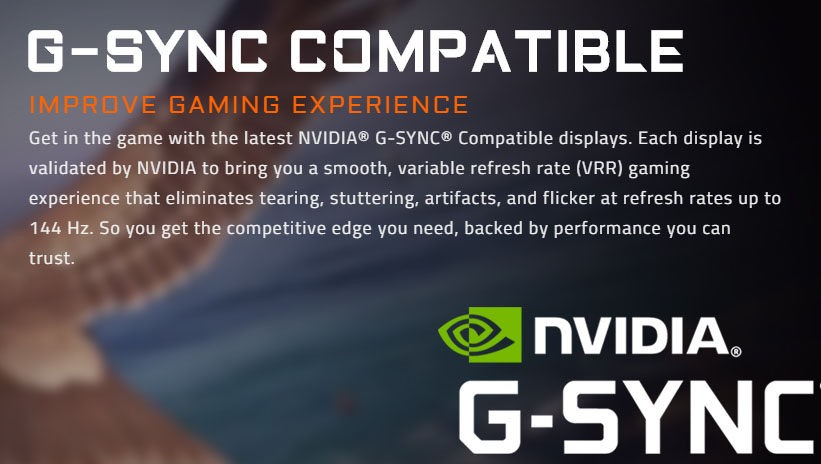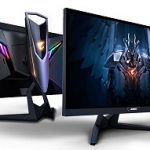Gigabyte Aorus AD27QD Gaming Monitor
Gigabyte is a relative new comer to the gaming monitor segment but what better way to enter to enter the market than through their flagship Aorus range and today we bring to you the Gigabyte AORUS AD27QD .
Having the best graphics card on your gaming rig ain’t going to do much good if you skimp on a decent quality monitor. And just like everything in life, good things don’t always come cheap. The Gigabyte AORUS AD27QD retails around AU$970 at the time of review which certainly isn’t cheap. Let us go through what makes the AORUS AD27QD special and see if it really stacks up to the Aorus brand that Gigabyte have managed to build up.
Specifications
| Panel Size (diagonal) | 27” |
|---|---|
| Display Viewing Area (HxV) | 596.736 x 335.664 (mm) |
| Panel Backlight/ Type | Edge type LED backlight |
| Display Surface(non-glare/ glare) | Non-glare type |
| Color Saturation | 95% of DCI-P3 |
| True Resolution | 2560 x 1440 |
| Pixel Pitch | 0.2331 (H) x 0.2331 (V) (mm) |
| Brightness (Max.) | 350 cd/m2 (TYP) |
| Contrast Ratio (Max.) | 1000 (TYP) |
| Dynamic Contrast Ratio | 12M:1 |
| Viewing Angle | 178°(H)/178°(V) |
| Display Colors | 1.073G |
| Response Time | 1ms (MPRT) |
| Refresh Rate (Max.) | 144Hz |
| Flicker-free | YES |
| Signal Input | HDMI 2.0 x2, Display port 1.2 x1 |
| Earphone Jack | Yes |
| USB port(s) | x2 |
| Analog Signal Frequency | N/A |
| Digital Signal Frequency | 30k~222kHz |
| Power Consumption | 75W(Max) |
| Power Saving Mode | 0.5W |
| Power Off Mode | 0.3W |
| Voltage | AC 100V~240V |
| Tilt(angle) | -5°~+21° |
| Swivel(angle) | -20°~+20° |
| Pivot(angle/direction) | +90° |
| Height Adjustment (mm) | 130mm |
| VESA Wall Mounting(mm) | 100*100mm |
| Kensington lock | yes |
| Phys. Dimension with Stand(WxHxD) | W614.9*H484.7*D236.9mm |
| Phys. Dimension w/o stand (WxHxD) | W614.9*H371.1*D60mm |
| Box Dimension (WxHxD) | W720*H565*D279mm |
| Net Weight (Esti.) | 8.0kg |
| Gross Weight (Esti.) | 11.9kg |
| Accessories | Power cable/HDMI cable/DP cable/USB cable/CD/QSG |
When you’re considering a monitor for both gaming and/or professional use, there are some basic aspects to look for. Here’s a list of some of the basic options and check marks against which are offered by the Aorus AD27QD.
| Feature | Offered on Aorus AD27QD(Yes/No) |
| High Resolution – Higher the resolution sharper and more clearer the images will be. While HD quality (1080P) is good, QHD (1440P) is better | Yes |
| Low Response Time (ms) – Shorter response time will ensure you won’t notice any motion blur during fast paced gaming or high speed movie scenes. Ideally for a gaming monitor you want this to be 1ms | Yes |
| High Refresh Rate (Hz) – Higher refresh rate will determine how quickly information on your screen will change, leading to smoother gameplay. Typical gaming monitor will require at least 75Hz refresh rate. The Aorus AD27QD goes way above that to 144Hz with AMD’s FreeSync or nVidia’s G-Sync technology. | Yes |
| IPS Panel Technology – While there’s some debate on the best type of panel between TN, VA and IPS, the latter is considered to provide the best image quality. | Yes |
Well there you have it, 4 of the most important criteria to look for in a gaming monitor is offered straight out the bat by the Gigabyte Aorus AD27QD.
As mentioned in the specs the Aorus AD27QD provides support for both AMD’s FreeSync and nVidia’s G-Sync technologies for a smooth stutter free gaming experience.
Contrast is a significant feature that determines image quality of a monitor. The Aorus AD27QD uses a 10-bit color IPS panel that offers a 1000:1 contract ratio which is somewhat of a standard to IPS gaming monitors these days.
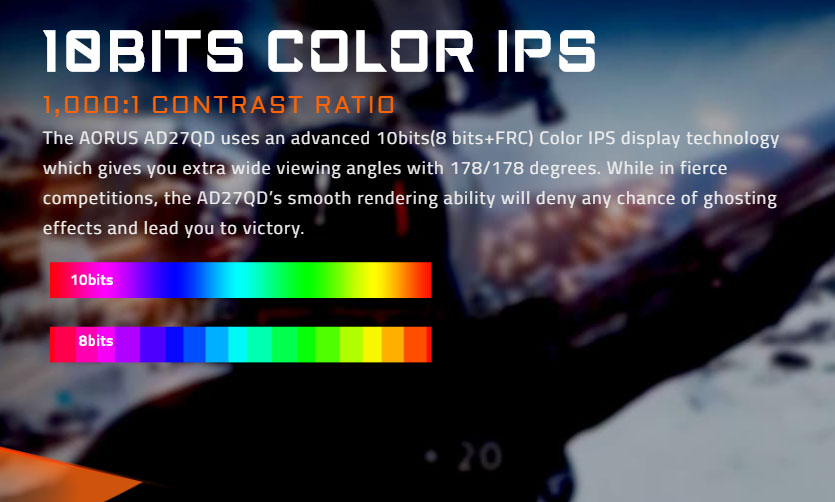
What’s interesting is when most IPS monitors out there are offering 4-5ms response times it’s impressive to see the Aorus AD27QD managing to provide a 1ms MPRT response time which is considered to be faster than GTG. The panel also delivers 95% of the DCI-P3 color space allowing you to see more realistic colors overall.
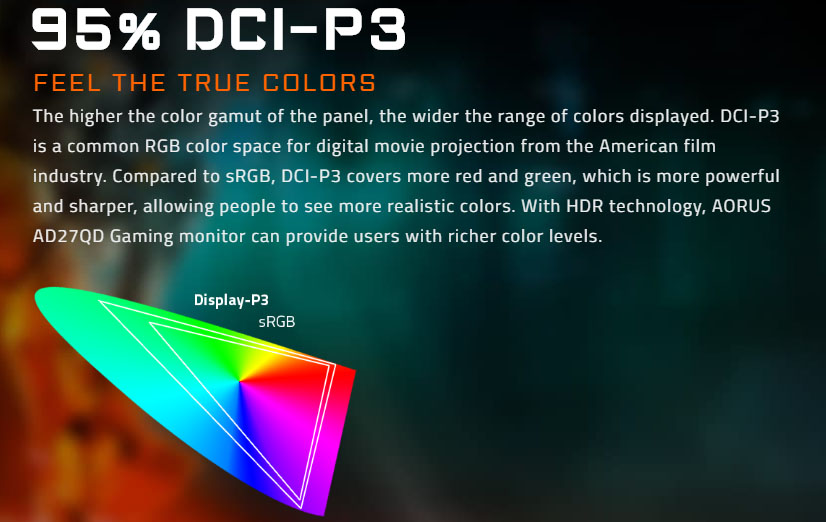
There are other cool features the Gigabyte Aorus AD27QD packs, so lets go through them in detail next.
| Table of Contents |
| 1. Introduction |
| 2. Closer look at Aorus AD27QD |
| 3. Performance and Conclusion |

